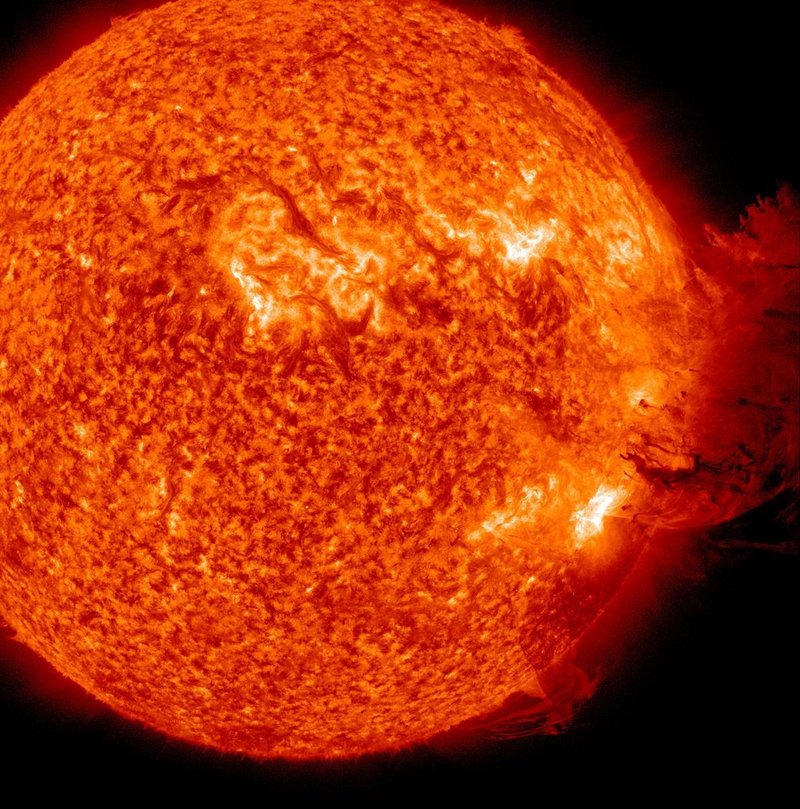WASHINGTON – A solar flare erupted from the sun in an impressive display captured by NASA cameras.
But scientists say the medium-sized event will have a minimal impact, if any, on Earth.
The flare peaked early Tuesday and created a large cloud that appeared to cover almost half the surface of the sun, NASA said.
A cloud of charged particles erupted from the sun’s outer atmosphere and is expected to pass by Earth late Wednesday or early Thursday, causing a minor disruption to Earth’s magnetic field, according to the National Weather Service’s Space Weather Prediction Center in Boulder, Colo.
“This wasn’t really such a big event,” said Michael Hesse, chief of the space weather laboratory at NASA’s Goddard Space Flight Center in Greenbelt, Md. “It was spectacular to watch, but not big in terms of hazards to the Earth.”
At most, the cloud that erupted from the sun may cause some brief interruptions to high-frequency radio communications, especially closer to the North and South poles, said Joe Kunches, a space scientist at SWPC.
Scientists have been expecting an increase in solar activity because the sun is moving into a more volatile period of an 11-year cycle in which its magnetic field reverses its orientation.
“The sun has woken up and is becoming more active as we approach the solar maximum,” expected in 2013, Hesse said.
Send questions/comments to the editors.



Success. Please wait for the page to reload. If the page does not reload within 5 seconds, please refresh the page.
Enter your email and password to access comments.
Hi, to comment on stories you must . This profile is in addition to your subscription and website login.
Already have a commenting profile? .
Invalid username/password.
Please check your email to confirm and complete your registration.
Only subscribers are eligible to post comments. Please subscribe or login first for digital access. Here’s why.
Use the form below to reset your password. When you've submitted your account email, we will send an email with a reset code.